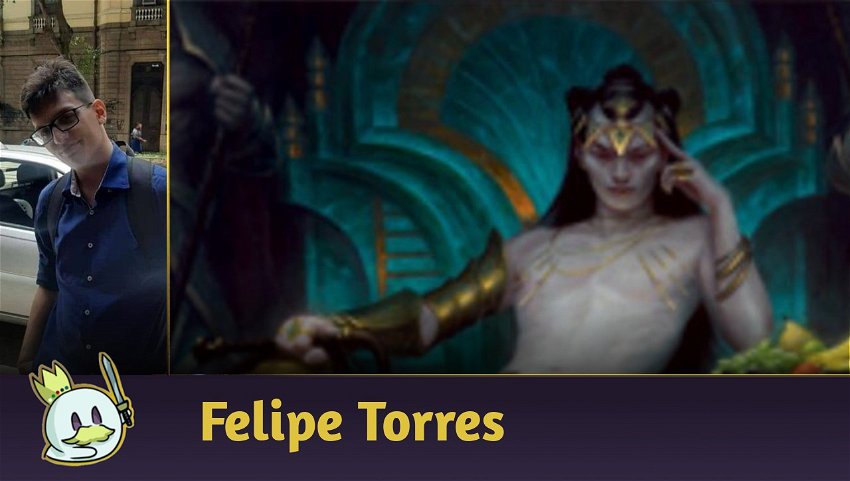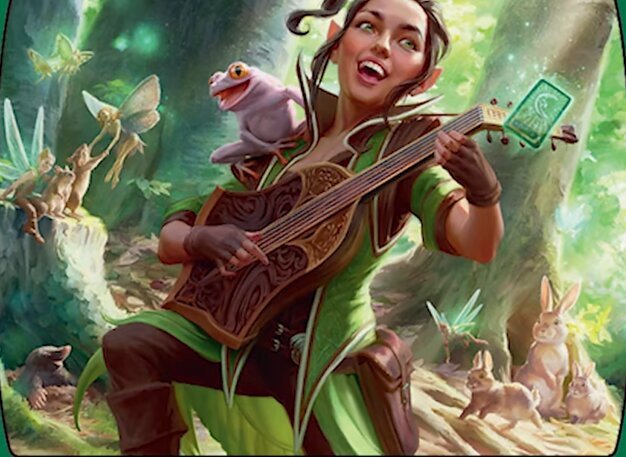Introduction
Greetings.
This week, I'll be introducing you to a budget option for the cEDH Tasigur deck, with the following rules:
• The deck must cost up to US$100 at the time of the deck creation.
• Commander(s) are not included in the final deck value.
• The deck is built to be as strong and consistent as possible given the deck's limitations.
• Basic lands are included in the deck value.
• Decks must respect the Banned & Restricted list from the EDH Rules Committee
The list that will be presented falls under the Control archetype, and was created by me and the player Kaylani Bochie, being developed to operate against other decks that are in the same price range. I hope that the decisions taken in defining this Decklist will convince more players to use lists of this archetype.
Ad
The Decklist

At first, we will observe the Tasigur, the Golden Fang. Even though he's a commander with high mana value for competitive decks, the Delve ability allows him to cost less and still helps filter out which cards in your graveyard you want to keep there. Its activated ability is a card advantage engine and an infinite mana Outlet, and it is precisely these abilities that are explored in this list.
Winning the Games
This deck uses a well-known loop called IsoRev: Isochron Scepter+Dramatic Reversal.
Loop condition: Isochron Scepter and Dramatic Reversal in hand and ability to generate at least 3 mana via artifacts and creatures; you need to be able to generate at least one blue or green mana so that you can have infinite colored mana, and thus use the ability of Tasigur.
Using Isochron Scepter, you cast it and Imprint the Dramatic Reversal card, so you only need to generate at least 3 mana with artifacts or creatures to generate infinite mana. You'll use this infinite mana to feed the Tasigur by generating an infinite Card Advantage and putting all the cards of your library into your graveyard 2 by 2, and gradually filling your hand, generating a way to infinitely return cards from your graveyard to your hand and activating Tasigur's ability. With infinite card recursion, you can cast any cards infinitely and, all at instant speed (excluding sorceries), and you can use these cards to win the game:

After you have the loops well-defined, you use Beast Within to destroy everything that can generate mana for your opponents, so even if they have interactions they won't have more mana to cast them.
Then you use Reality Shift, which exiles opponents' creatures and manifests the top card of their library, (turning the top cards of your opponents' library one by one into colorless creatures and without any type, with power and toughness equal to 2, and no abilities); after manifesting the top card you exile it and now that it is a creature.
It is possible to manifest the top again until the opponent has no cards in the deck, and use the Beast Within again to destroy the last manifested creature, leaving your opponents with no cards to draw and no mana to respond to, and probably no patience. If your opponents have some kind of recursion for the deck, you can use the loop with Shred Memory to respond to the activation by exiling the graveyard
Things to keep in mind
• If you don't have Noxious Revival in your hand, it's a good idea to use Tasigur's ability sparingly so that none of your opponents try to take advantage of the lack of cards in your deck.
• Deck loops are complex and having answers to prevent your opponents from stopping you is essential, sometimes your opponents can get lost and interact at the wrong time with the loop. In these cases, consider carefully whether you will be able to continue the loop before responding.
Ad
The deck's packages
To make the explanation easier, I have separated the deck's cards into different packages, having different sizes that have been defined according to the deck's needs; some cards fit into more than one pack, and I'll talk about them below.
The packages are: Removals, Counterspells, Ramp, Card Advantage, Cantrips, Recursions and Tutors.
Removals

The removals were chosen to cover as many permanents as possible, at the lowest possible cost, so we have low-cost removals and bounces. If the threat is already in the field, try to use more specific removals and bounces before opting for interactions that work in more situations so as not to end up with that useless card later; removals that create creatures for opponents turn out to be less of a problem when the commander himself is bigger than the tokens they create.
Avoid using Reality Shift and Beast Within to remove anything that is not absolutely necessary, as if you can't retrieve these cards later, it will be harder to win the game.
Counterspells

Counters are a hot topic when it comes to casual games, and luckily this deck wasn't built for casual play. The counters played on this deck are meant to deal with different situations and cover as many scenarios as possible.
We have unconditional counters like Counterspell, Delay and Mana Leak that work for any situation, Countersquall, Stubborn Denial, Negate and Spell Pierce to deal with non-creature spells, Spell Snare , Mental Misstep and Drown in the Loch being counters that care about the mana cost of the spell being countered. Finally, the objective is to optimize the possible interactions as much as possible, using the specific ones before the comprehensive ones.
Ramp

The ramp for this deck consist of two types: those that generate colorless mana and those that generate colored mana.
I tried to keep as many ramp as possible that are affected by the combo, so be careful when trying to win the game using Elves of Deep Shadow or Talisman of Resilience, as these damage you to generate mana . And if you have cheaper mana rocks, these cards can be exchanged for other rocks such as Wild Growth, Arbor Elf, Fertile Ground and Elves of Deep Shadow.
Ad
Card Advantage

When your list is slower and more reactive, focusing on Card Advantage spells (which give you cards throughout the game) turns out to do better than focusing on more punctual cards.
Cards like Narset, Parter of Veils, Notion Thief are great because in addition to generating card advantage, they also prevent your opponents from drawing cards. Still, I kept cards like Treasure Cruise that generate card advantage to re-establish your hand when necessary and Windfall which helps a lot when you have far fewer cards in your hand than your opponents.
Cantrips

Cantrips are excellent in the Early game, however as the game progresses they become a problem for the deck. Often an opponent will prefer to return cantrips to your hand with Tasigur, so I preferred to use a Life from the Loam package with some cycling lands to serve as cantrips. It's worse, but they cannot be targeted by Tasigur's ability, and I kept only the most important cantrips.
Tutors

In this package, we have tutors for the important parts of the combo like Muddle the Mixture, Shred Memory and Wishclaw Talisman which even being tutors in Sorcery speed are essential, as they have activated abilities that search for a card, being more difficult for the other players to respond.
The Neoform is a way to find Nezahal, Primal Tide, sacrificing Tasigur, and is a great way to keep the card advantage at any time in the game. Another possible play is to use an Oakhame Adversary as a sacrifice and get a Seedborn Muse, especially if Nezahal or another engine is already on the field.
Strengths & Weaknesses
Every decklist has its strengths and weaknesses, here I'll talk a little about those on this list.
Strengths: This list has such a large number of interactions that you will hardly try to win without having at least 3 answers in hand. Tasigur manages to hold on well in mid game, and if an opponent has the advantage over the others, you can use the Tasigur and ask for an appropriate response from your graveyard, holding the game longer.
The Tasigur pilot has to know when to interact, but more important than that is for him to know when not to interact because you can't risk being without answers to problematic cards, especially if you're going to spend 4 mana just to get the answer in your hand, not to mention the spell's cost.
Weaknesses: The list is slow and this makes it much easier for you to deal with opponents' boards, but very aggressive decks can take advantage of you when you don't have a lot of mana available and try to win the game.
Ad
This deck can play both forwards and backwards. When it plays forward, opponents tend to always send the worst cards from your graveyard to your hand, and if you like to play more aggressively, Thrasios is better for this. Because the deck doesn't have many different wincons or wincon pieces, you might end up not finding one of them. In my tests and games I was slow to find, and I never won the game after the eighth or ninth inning.
I close this article here, and stay tuned that soon we will have another cEDH budget deck to demystify this idea that every cEDH deck is more expensive than a car.










— コメント0
最初にコメントする